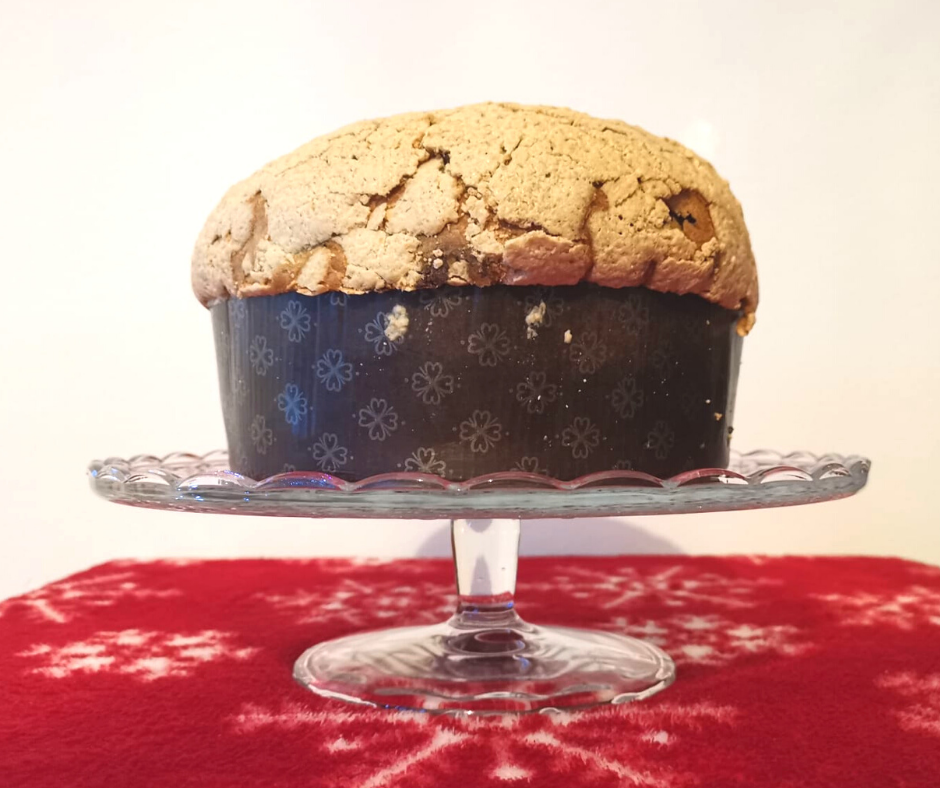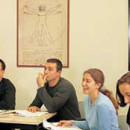In Piedmont, it's not a party if during the Christmas holidays you don't eat at least one Galup panettone, which in the Piedmontese dialect means gourmand. The historic company was born in Pinerolo in 1922 as a pastry shop. The owner, Mr. Pietro Ferrua, begins to produce a recipe of his own invention, the low panettone with hazelnut glaze. Thanks to this dessert, the fame of the shop grew rapidly until it earned the patent of Supplier of the Royal House in 1937.
Between the 1940s and 1950s, the bakery expanded to become a modern factory and Galup expanded nationally and internationally, mainly reaching France, the United Kingdom, South Africa and the United States. Between the 1970s and 1980s, artisanal production of 30,000 panettones per year was reached. The 90s and 2000s, on the other hand, marked the decline of the company which ceased operations in 2012. In 2013, however, a group of young Piedmontese entrepreneurs - engaged in the automotive and communication sector - decided to give new life to Galup by carrying forward its values and quality.
Thus Galup panettone continues to be produced with the same mother yeast of 1922, which is revived every day with water and flour to keep its organoleptic properties intact. All the other ingredients are chosen in the name of quality: IGP Piedmont hazelnuts, very fresh eggs from free-range hens, selected wheat flour, fresh Italian milk, traditional butter and naturally candied fruit only with sugar. While remaining anchored to tradition, in recent years Galup has introduced new ingredients such as turmeric, organic and wholemeal flours, and oil to experiment with recipes in line with the habits and lifestyles of customers who are increasingly attentive to well-being.
Galup also supports the activities of the prestigious University of Gastronomic Sciences of Pollenzo, sharing its sustainability strategies in the production and consumption of food.
See also:
- Turin shines with Luci d'Artista
- How do Romas celebrate Christmas?
- Christmas time and New Year's Eve in Italy
- Pandoro or Panettone?
- Il Natale in Italia: la cena di vigilia
I panettoni Galup del Piemonte
In Piemonte non è festa se durante le vacanze di Natale non si mangia almeno un panettone Galup, che in dialetto piemontese significa goloso. La storica azienda nasce a Pinerolo nel 1922 come pasticceria. Il proprietario, il Signor Pietro Ferrua, inizia a produrvi una ricetta di sua invenzione, il panettone basso con la glassa di nocciole. Grazie a questo dolce la fama del negozio cresce velocemente fino a guadagnarsi nel 1937 il brevetto di Fornitore della Real Casa.
Fra gli anni ’40 e ’50 il forno si ingrandisce fino a diventare uno stabilimento moderno e la Galup si espande sul territorio nazionale ed internazionale, raggiungendo principalmente Francia, Regno Unito, Sudafrica e Stati Uniti. Fra gli anni ’70 e ’80 si arriva ad una produzione artigianale di 30.000 panettoni all’anno. Gli anni ’90 e 2000 segnano, invece, il declino dell’azienda che cessa l’attività nel 2012. Nel 2013, però, un gruppo di giovani imprenditori piemontesi - impegnati nel settore dell'automotive e della comunicazione – decide di ridare vita alla Galup portandone avanti i valori e la qualità.
Così i panettoni Galup continuano ad essere prodotti con lo stesso lievito madre del 1922, che viene ravvivato ogni giorno con acqua e farina per conservare intatte le sue proprietà organolettiche. Tutti gli altri ingredienti sono scelti all’insegna della qualità: nocciole Piemonte IGP, uova freschissime di galline allevate a terra, farina di grano selezionato, latte fresco italiano, burro tradizionale e frutta candita naturalmente solo con zucchero. Pur restando ancorata alla tradizione, negli ultimi anni la Galup ha introdotto nuovi ingredienti come la curcuma, farine biologiche e integrali, l’olio per sperimentare ricette in linea con le abitudini e gli stili di vita di clienti sempre più attenti al benessere.
La Galup sostiene anche le attività della prestigiosa Università degli Studi di Scienze Gastronomiche di Pollenzo, condividendone le strategie di sostenibilità nella produzione e nel consumo del cibo.
Scuola Leonardo da Vinci Turin
The welcoming friendly atmosphere of our school will make you feel at home and you can relax with your classmates in the small gardens of the adjacent pedestrian area.
Latest posts by Scuola Leonardo da Vinci Turin (see all)
- The 4+1 unmissable suggestions for Christmas shopping in Turin - December 17, 2025
- What is the difference between the Carabinieri and the Police? - November 26, 2025
- 5+1 scenic spots in Turin with the Scuola Leonardo - October 15, 2025











